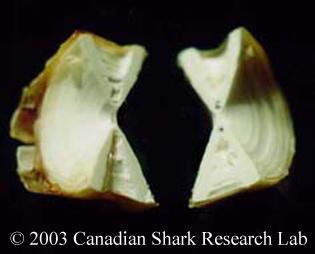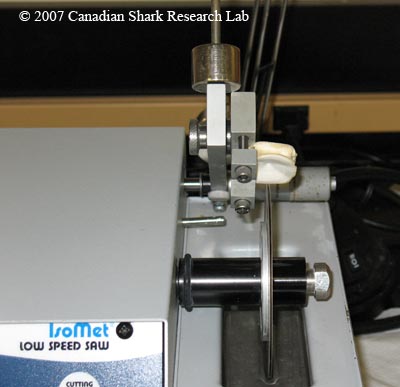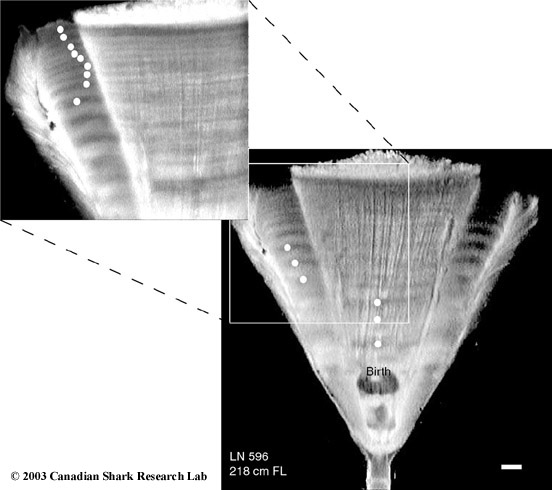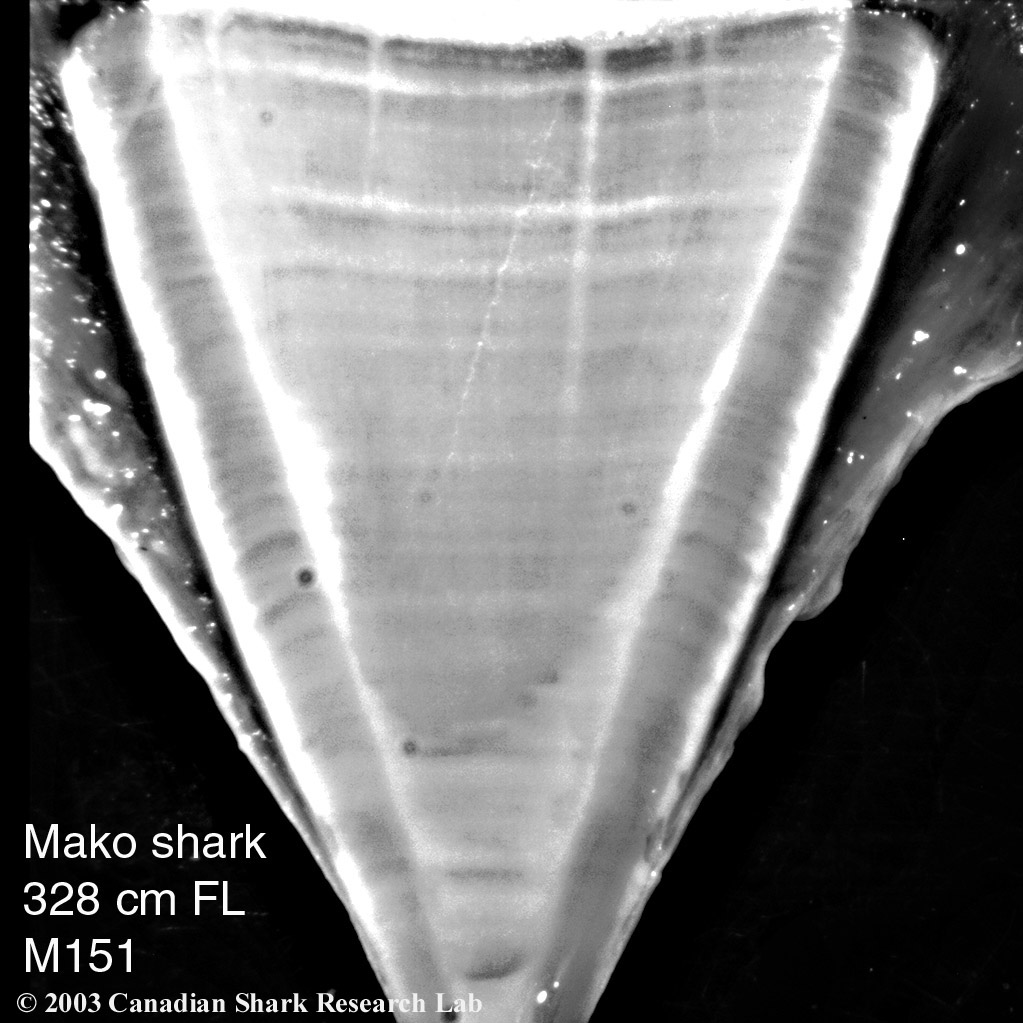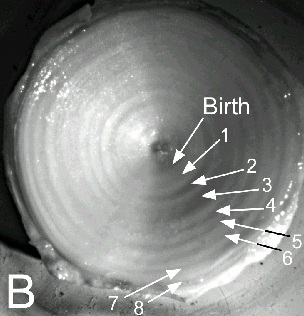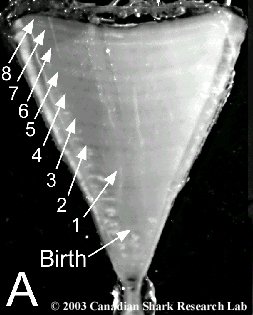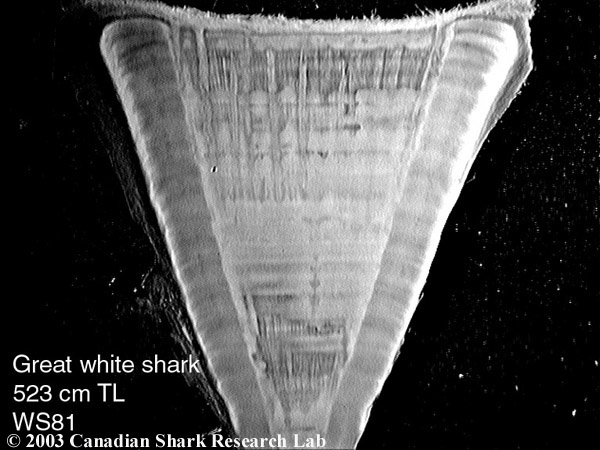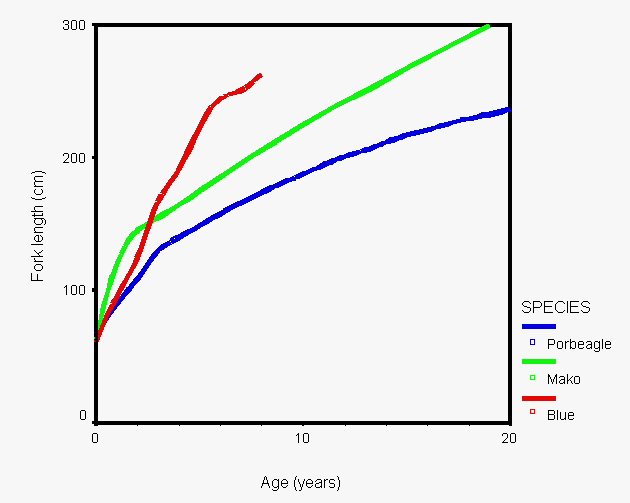Ageing Sharks
The age of a shark is determined by counting the growth rings formed on the vertebra. The vertebral rings are laid down on a yearly basis not unlike those of trees. This method is analogous to the method used in ageing bony fish using the otolith (earstone), although not as well refined. However, sharks do not have otoliths, necessitating the use of the vertebrae. The web site of the Otolith Research Laboratory gives a more complete description of age determination practices in bony fish. The web site Skates and Rays of Atlantic Canada provides detailed information and methods on the age determination of skates and rays.
Vertebrae from the backbone of the shark are prepared for ageing by embedding and sectioning them. Several vertebrae from the cervical region are first removed from the animal and all the surrounding tissue (muscle, etc) cut away from the centra. The top of the haemal arch is removed to allow removal of the spinal cord. One or two of the calcified centra are then sectioned through the centre of the centrum with a low-speed diamond-bladed saw. The cut is made perpendicular to both the centrum face and the haemal arch. For shark species with large vertebrae (like whale and basking sharks), a specialized sectioning method is required; this method is demonstrated in a YouTube video on large vertebra sectioning. Generally, paired blades separated by a 0.6 mm spacer are used to prepare a thin section with one cut. The vertebra is now ready for image analysis and identification of growth rings. Variations of the above sequence may be better suited for some shark species. For example, the vertebrae may be frozen, dried, X-rayed or pre-treated with chemical dyes to enhance visibility of the growth rings.
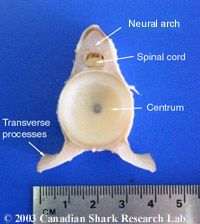
The vertebra of a porbeagle shark after it has been removed from the animal and the surrounding tissue removed. Some of the annular growth rings are visible on the face of the centrum.
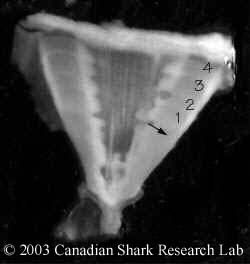
Annual rings in the vertebra of a known-age porbeagle shark. The arrowhead points to the birth ring. The subsequent rings indicate that this shark was 4 years old.
Below are some images of vertebrae from older porbeagle, blue, mako and white sharks. Click on the images to compare the differences between these species (Note: these are high resolution images, so the images will take somewhat longer to display).
Vertebrae from older sharks
Growth curves show the average size of a shark at each age, as determined from vertebral ring counts. Preliminary growth curves for the blue shark, the shortfin mako and the porbeagle shark are shown below. Although growth curves provide a good overall indicator of size at age, factors such as the state of health, reproductive state and local conditions can all modify the growth rate of individuals. Examples of growth curves and shark age determination are shown in Natanson et al. (2002) and MacNeil and Campana (2003).
Estimates of age, growth rate and longevity in sharks all assume that the vertebral rings are an accurate indicator of age. While this is probably true in most cases, confirmation of their accuracy (known as age validation) is lacking for most shark species. We now have age validation based on bomb radiocarbon for several shark species: porbeagle (in both the NW Atlantic and the South Pacific), mako and spiny dogfish.
